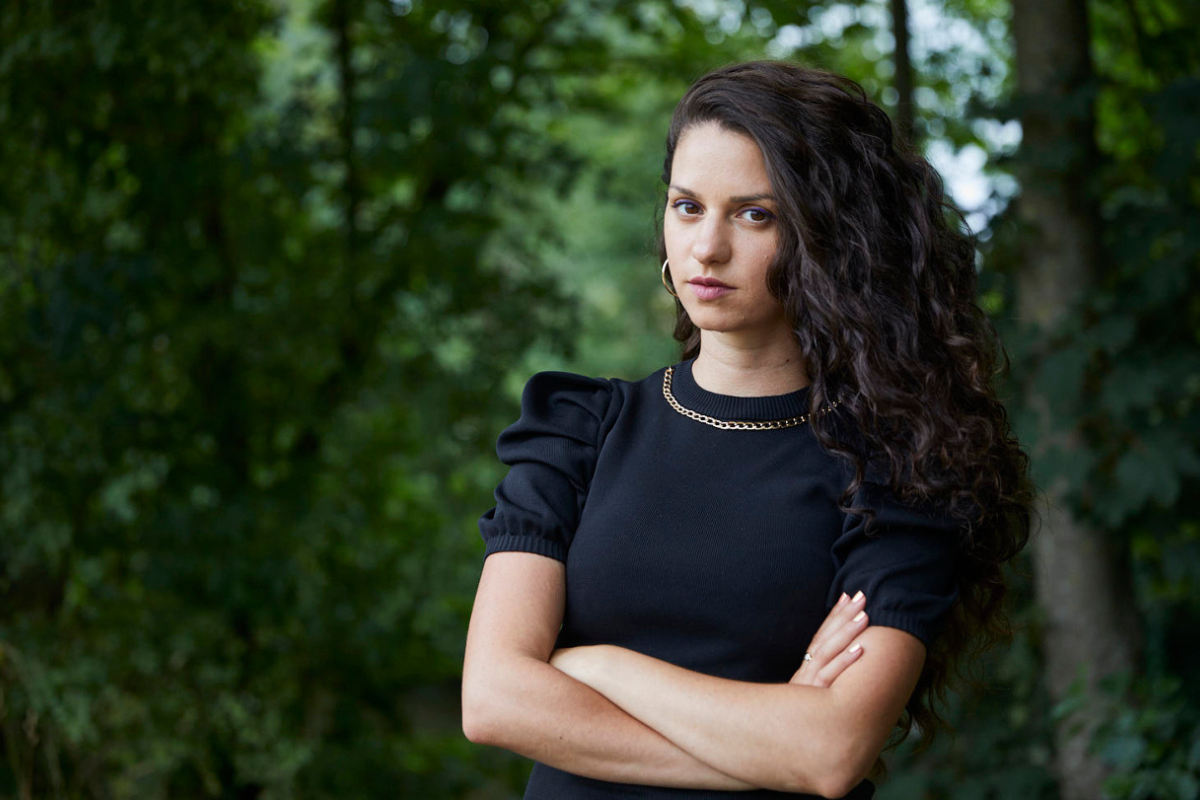Sapir Heller is one of Germany’s most in-demand directors in theater. She’s directed numerous productions in Munich (where she lives), Mannheim and many other cities and towns throughout the country. Sapir is a unique figure in Germany’s theater scene as a female Israeli Jewish director under the age of 40. She’s also a parent, a talented writer and makes a mean boureka.
One of Sapir’s recent theater projects was the “Lebendige Stolpersteine” (“Living Stumbling Stones”) interactive production in Tübingen which ran during July 2024, also slated to take place in some other German towns throughout the rest of 2024. In 2025, one of Sapir’s upcoming projects is “Der Besuch der alten Dame” (“The Visit”).
I had the pleasure of speaking with Sapir a few weeks ago, and we discussed her most recent multimedia theater project, her role models and how her identity impacts her work.
(Editor’s note: This interview took place in German; the author translated it into English.)
What was your inspiration behind the “Lebendige Stolpersteine” theater project? How have participants and audience members been responding to it?
Stolpersteine are small gold stones that mark the former residences of Holocaust victims throughout German cities and towns. I find the idea of the Stolpersteine so smart, because you truly stumble over them and can’t miss them. It gives you an idea of how vibrant Jewish life was in Germany, especially in a big city like Berlin where there are many Stolpersteine.
As a “theater person,” theater is the lens with how I interpret everything, so I wanted to bring the stones alive with theater. In Tübingen, where the project started out, the production involves a tour of the city. Tübingen is a university town. When the university was founded in 1477 partly by a highly antisemitic count, the Jewish community was kicked out for the next 400 years. So, even before the Holocaust, it wasn’t one of the biggest Jewish communities in Germany, and there was a big history of antisemitism, which was a theme we also wanted to deal with in the production. Therefore the focus isn’t just on Jewish life in the 20th century, but also earlier history. As you go through, you stop at various residences where the Stolpersteine indicate the former Jewish owners, and individual theater pieces are performed at these stops.
It’s an interactive project, and it also involves an app where the audience members can even make some choices for the actors in some of the scenes using the app. For the actors, it was a fascinating experience because they got a totally different perspective on where they live, and we got positive feedback from our audience members.
We did experience some harassment during rehearsals and performances. During one rehearsal, strangers came and started screaming “Free Palestine” as we were trying to rehearse, even though the performance had nothing to do with the conflict. And in one of our performances, a neighbor in one of the residences deliberately blasted his television set throughout the entirety of the performance out the window.
Do you feel like elements of identity, such as being Israeli but living in Germany for many years now, influence some of your artistic choices or give you varied perspectives on your theatrical interpretations?
Most of my theater career has taken place in Germany, including my studies, so a lot of what I’ve done and what I’ve learned in the world of theater could be seen as very “German.” Nevertheless, I am who I am — I’m on the outside looking in, which is something I think every immigrant experiences.
I often ask myself, “Does art have a national identity? Do I make German art? Do I make Israeli art?” I still don’t know the answer.
I’ve lived away from Israel for 15 years now. Perhaps I would say my “home” is the Hebrew language.
The “Lebendige Stolpersteine” project deals with how one grapples with the past and continues to interact with it in the present day. Can you tell us more about your current theater project, and how you feel it’s also part of this larger theme?
Lately I’ve been working on Durrenmatt’s play “The Visit.” The play involves three generations, and this is a project very close to my heart because it feels like I’m working on a project about my own family. On my maternal side, my grandparents came to Israel from Syria in the 1950s. On my paternal side, my grandfather escaped from Vienna in the 1940s as a baby and immigrated, and my grandmother survived the Holocaust in the Ukraine; she came to Israel afterwards.
I can’t run from the past. I have to grapple with it, so I grapple with it through theater. This topic feels particularly relevant to me right now, because there is the vibe that many people in modern-day Germany prefer to block out the past, like with the current popularity of AFD (Alternative for Germany, a far-right political party).
Do you have any Jewish female role models, particularly in the theater world, that give you inspiration for your art?
Art and theater always have to do with the search for identity. No matter if you feel strongly connected to your Jewish heritage or not, it plays a role when you’re engaged with your work.
It’s hard for me to pinpoint Jewish female role models in the theater world, it’s really such a male-dominated field. I’m personally inspired by the work and personality of Hannah Arendt, even though that’s not specifically theater.
At the end of the “Lebendige Stolpersteine” performance, everyone gathers inside the theater building and there’s food and music, and our theater team has chosen photos surrounded by golden frames. Inside the frames are the team member’s personal Jewish heroes. You can find celebrities like Mascha Kaleko or Bob Dylan among the frames. The photo that I picked is one of my grandmother. I love the fact that her photo is sitting next to Albert Einstein! Fame is not necessarily the only grounds for artistic inspiration or for a role model.



